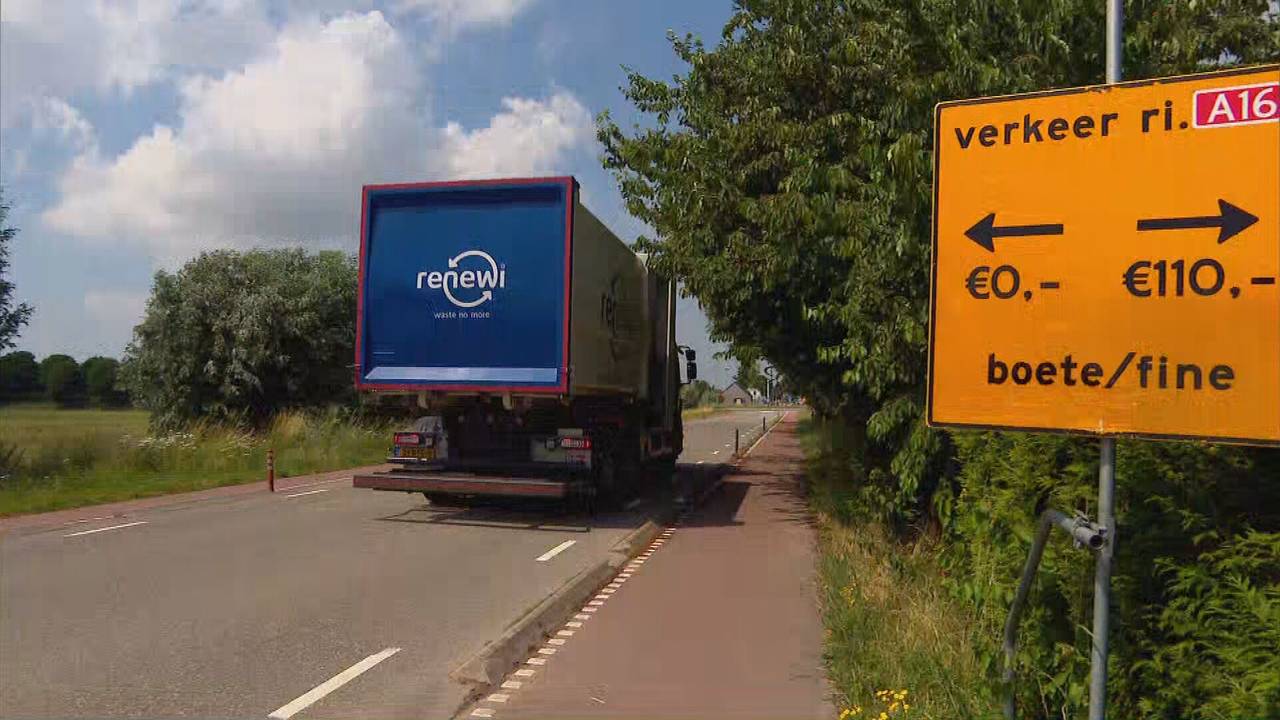Residents of Moerdijk Municipality Frustrated with Increased Cut-Through Traffic
Moerdijk Municipality, Netherlands – The inhabitants of Moerdijk Municipality are expressing their frustration with the surge of cut-through traffic in their streets. Since the closure of the Haringvliet Bridge for renovation, residents have noticed a significant increase in traffic from all over the country using roads that were not intended for such heavy usage. Despite the presence of route signs, traffic rules, and concrete blocks, drivers are hastily finding their own way to or from the Moerdijk bridge, the only remaining crossing between West Brabant and South Holland.
One of the affected roads is the Achterdijk, a typical country road known for its scenic cycling routes and peaceful atmosphere. However, since the closure of the Haringvliet Bridge on June 11, the tranquility has been disrupted. The shortcut has been discovered by car traffic between West Brabant and South Holland, resulting in a long line of vehicles in front of residents’ homes. Furthermore, drivers are often speeding to make up for lost time.
“It’s eight weeks of pain,” says alderman Danny Dingemans, acknowledging the consequences of the bridge closure. Tens of thousands of vehicles are now seeking alternative routes every day, causing congestion on the A16 and A17 motorways, which are the official diversion routes. As a result, traffic is crisscrossing through the municipality of Moerdijk, causing further disruption.
One particular street affected by the increased traffic is Driehoefijzerstraat in Zevenbergschen Hoek. Despite the municipality’s efforts to fortify the village with route signs, prohibition signs, and concrete blocks, some drivers continue to ignore the restrictions. The situation has become so severe that even the cycle path is now littered with concrete blocks.
“We had to place additional blocks because motorists drove on via the cycle path. Apparently, the fences didn’t work well enough. There are people who don’t care. Overtaking on the wrong side, driving over verges, stepping on the gas, and short fuses behind the wheel,” explains Dingemans.
In response to the unruly behavior, Dingemans believes strict measures are necessary. He states, “If people don’t behave well, we have to be strict.” However, as he speaks, a motorist maneuvers behind him on the bike path, claiming not to have seen the barriers. This incident highlights the ongoing challenges faced by the municipality.
Despite the inconvenience, residents of Zevenbergschen Hoek are relieved by the municipality’s resolute action. “It’s wonderfully quiet in our street. Otherwise, it’s like a racetrack, and hundreds of people fly down the street. We are satisfied, even though we now have to make a detour ourselves,” says a local resident. Another neighbor admits, “I would also drive indoors if everything is fixed on the highway. There is one every 15 minutes.”
While road closures like the one in Driehoefijzerstraat are not feasible everywhere, residents are taking matters into their own hands. On the Achterdijk, evening strolls have been replaced with a playful protest. Each household places their wheelie bins on the street every day, adorned with large stickers displaying a speed limit of 60 km/h. The hope is that drivers with short fuses will understand the message.
The closure of the Driehoefijzerstraat due to increased traffic (photo: Omroep Brabant).
Date: June 21, 2023
Written by: Frits van Otterdijk
What are the specific measures that Moerdijk Municipality has taken to minimize the impact of cut-through traffic on residential areas?
S efforts to minimize the impact of cut-through traffic, residents are growing increasingly frustrated with the situation. The peace and quiet they once enjoyed in their neighborhoods have been replaced with constant noise and congestion.
The closure of the Haringvliet Bridge has forced drivers to find alternative routes, leading them to use roads that were not designed for heavy traffic. Despite the presence of signs and barriers, drivers continue to find their own way to the Moerdijk bridge, resulting in a surge of vehicles in residential areas.
One road that has been particularly affected is the Achterdijk, a popular cycling route known for its scenic beauty. Now, it is filled with cars moving at high speeds, causing distress for both residents and cyclists. The tranquility and peaceful atmosphere that once characterized the road have vanished.
Alderman Danny Dingemans acknowledges the frustrations of the residents, describing the situation as “eight weeks of pain.” The closure of the bridge has caused tens of thousands of vehicles to seek alternative routes, leading to congestion on major motorways. This, in turn, has resulted in increased traffic crossing through the municipality of Moerdijk, exacerbating the problem for residents.
One specific street heavily impacted by the increased traffic is Driehoefijzerstraat in Zevenbergschen Hoek. Despite the municipality’s efforts to mitigate the effects of cut-through traffic, residents are still experiencing the negative consequences firsthand.
Overall, the residents of Moerdijk Municipality are increasingly frustrated with the surge in cut-through traffic. They are enduring constant noise, congestion, and speeding vehicles in what used to be peaceful and quiet neighborhoods. As the bridge renovation continues, residents hope for a swift resolution to alleviate their frustration and restore their quality of life.

The increase in cut-through traffic resulting from the bridge closure in Moerdijk is causing great inconvenience and dissatisfaction among the residents. It is important for authorities to address this issue promptly and find alternative solutions to minimize the impact on the community.
“It is unfortunate to hear that residents of Moerdijk are facing the negative impact of increased cut-through traffic as a result of the bridge closure. The local authorities should prioritize finding alternative solutions to ease the burden on these communities and alleviate their concerns.”